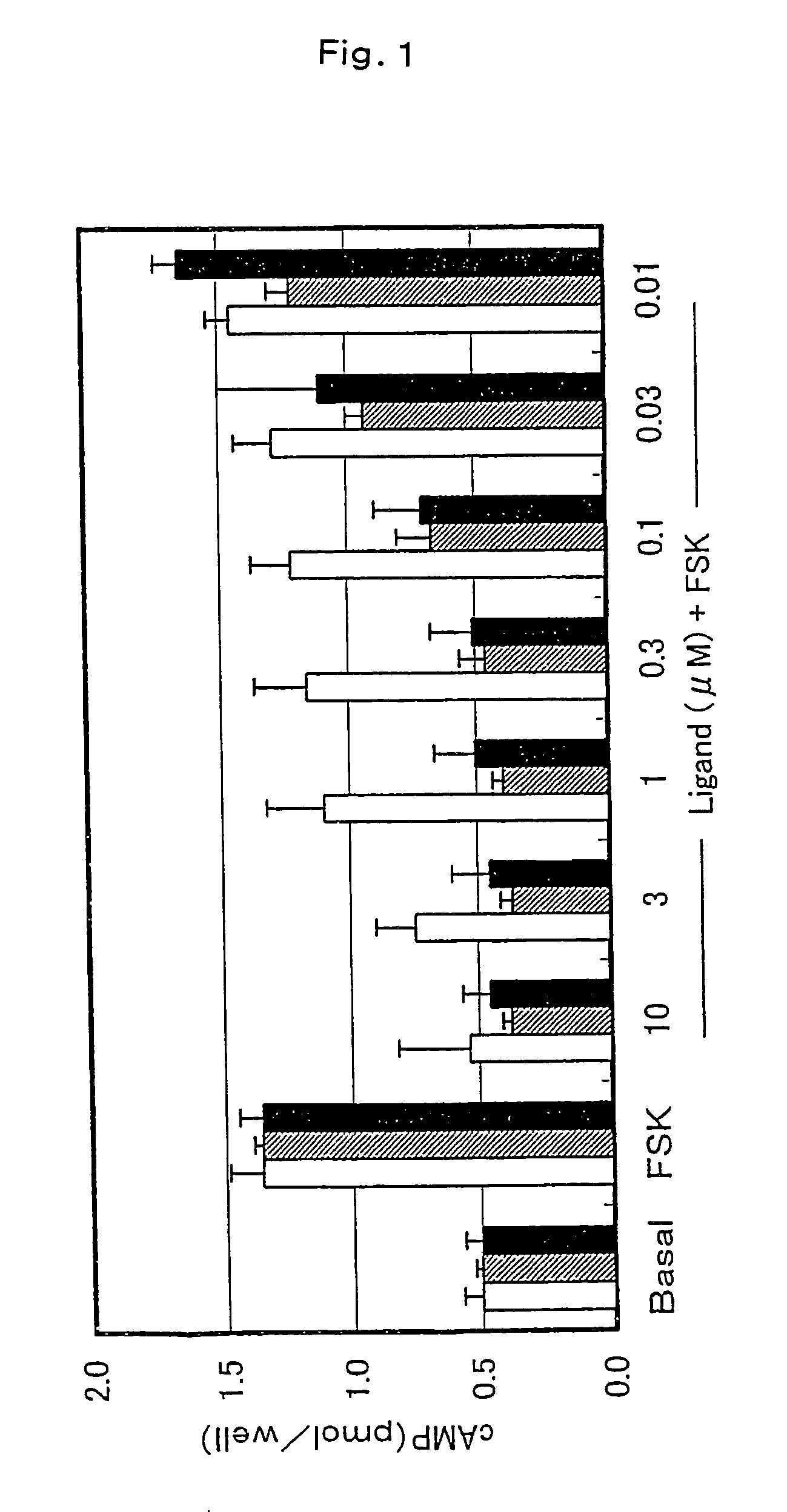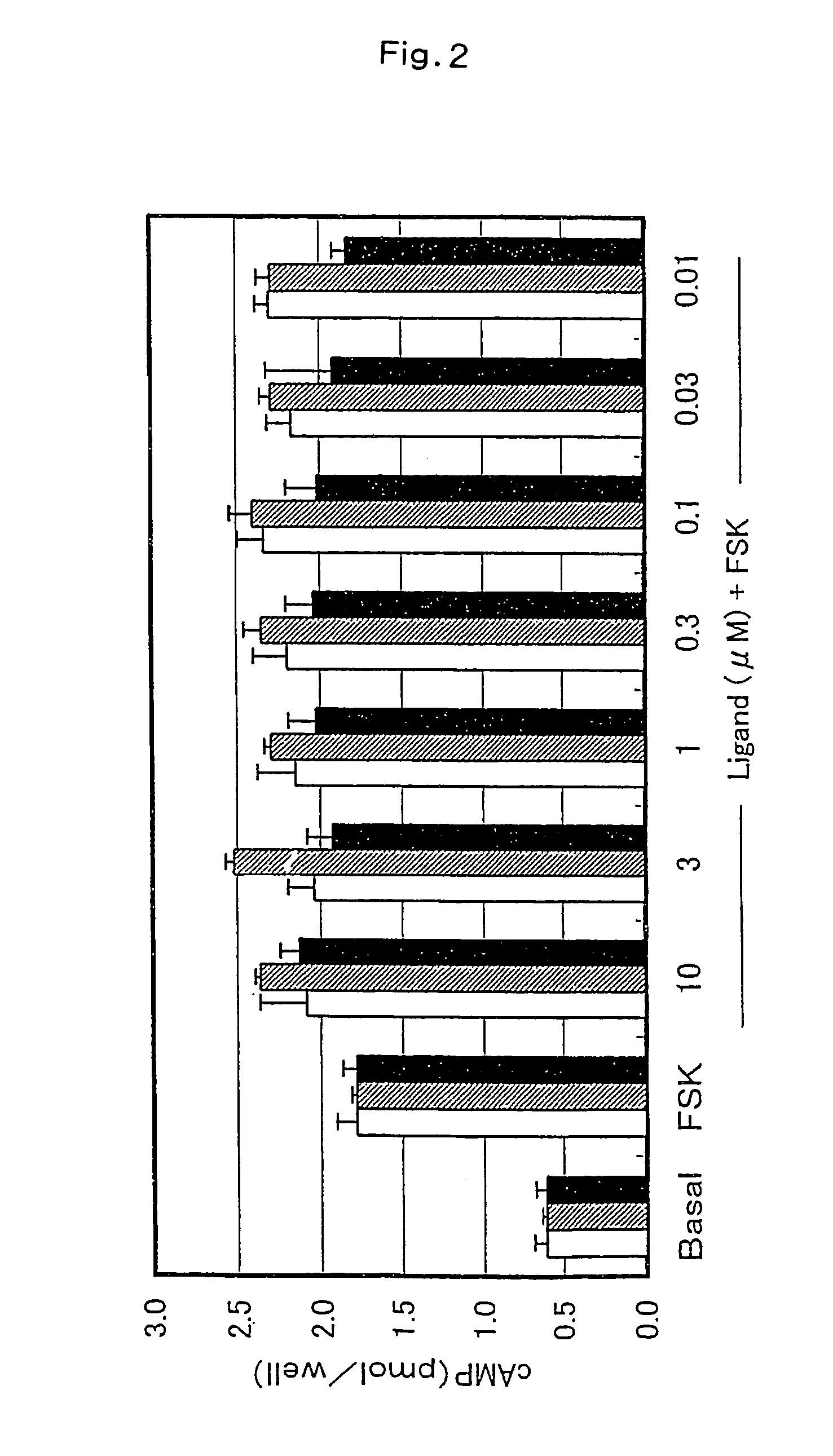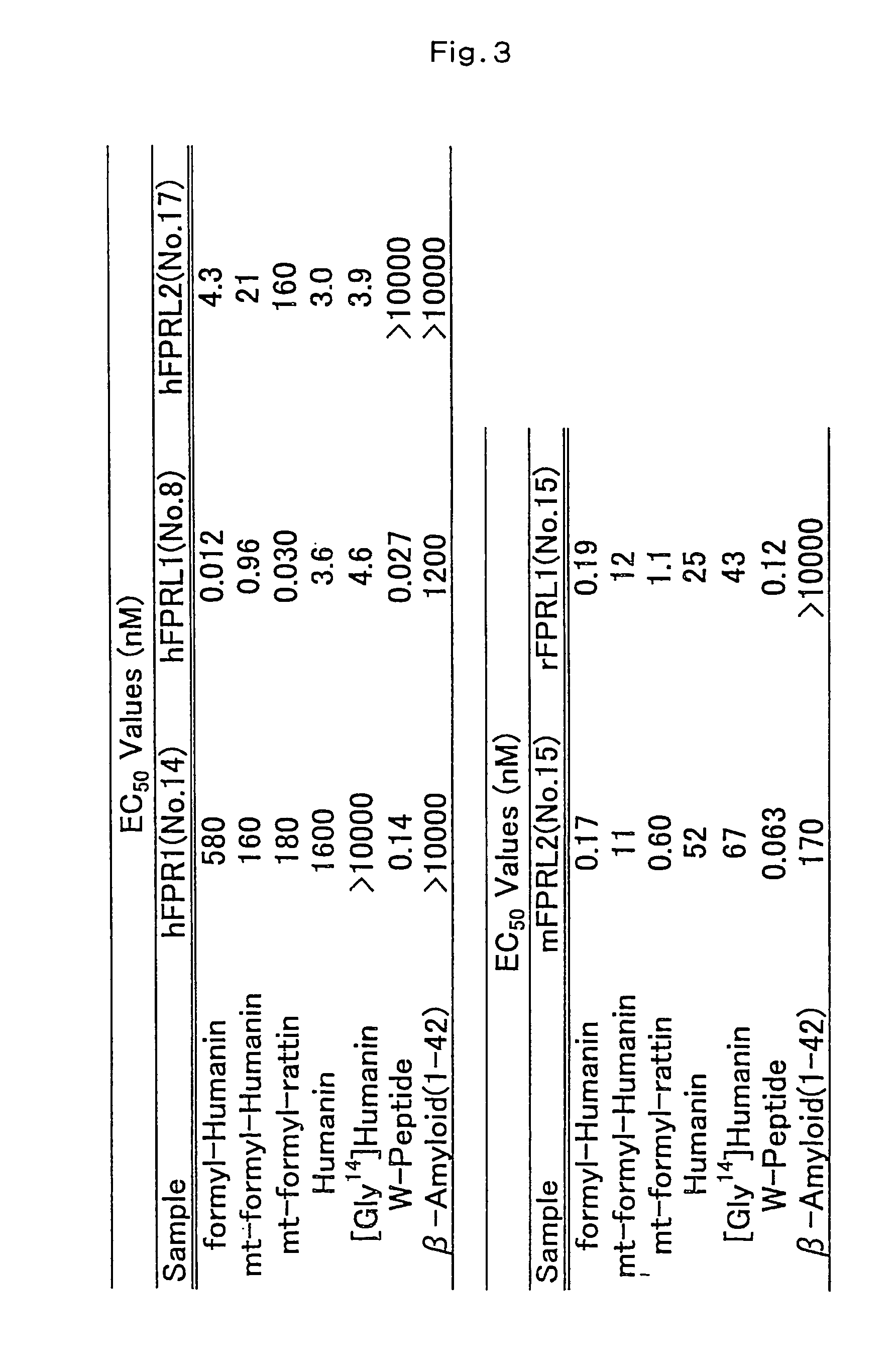Method of screening therapeutic agents for nerve degeneration associated diseases
a technology of nerve degeneration and therapeutic agents, which is applied in the direction of drug compositions, cardiovascular disorders, peptides, etc., can solve the problems of not knowing if there are subtypes of known receptor proteins, difficult to predict their functions from information, and no effective therapy for this diseas
- Summary
- Abstract
- Description
- Claims
- Application Information
AI Technical Summary
Benefits of technology
Problems solved by technology
Method used
Image
Examples
reference example 1
Cloning of cDNA Encoding Mouse Spleen-Derived FPRL2 and Construction of an Expression Vector
[0667]Using mouse spleen-derived cDNA (Marathon-Ready™ cDNA, Clontech) as a template and two primers designed on the basis of the sequence information of mouse FPRL2 (Accession #071180, NCBI), namely, primer 1 (SEQ ID NO: 16) and primer 2 (SEQ ID NO: 17), PCR was carried out. Using Pyrobest DNA polymerase (Takara Shuzo CO., LTD), the PCR reaction was carried out by (1) reaction at 98° C. for 1 minute, (2) 35 cycles each consisting of reaction at 98° C. for 10 seconds, at 55° C. for 30 seconds and at 72° C. for 60 seconds, and (3) extension reaction at 72° C. for 2 minutes. After the reaction, the amplified product was cleaved with restriction enzymes Sal I and Xba I and then inserted into plasmid vector pAKKO-111H to construct an expression vector. As a result of analysis of the nucleotide sequence thereof, a cDNA sequence (SEQ ID NO: 13) encoding mouse FPRL2 consisting of the amino acid sequ...
reference example 2
Cloning of cDNA Encoding Rat Spleen-Derived FPRL1, Determination of its Nucleotide Sequence, and Construction of an Expression Vector
[0668]From rat spleen mRNA, cDNA was synthesized by using Marathon™ cDNA Amplification Kit (Clontech), and an adapter was added to the terminal thereof. Using this cDNA as a template and two primers, namely, primer 3 (SEQ ID NO: 18) and primer 4 (SEQ ID NO: 19), PCR was carried out. Using Advantage 2 Polymerase mix (Clontech), the PCR reaction was carried out by (1) reaction at 96° C. for 1 minute, (2) 5 cycles each consisting of reaction at 96° C. for 10 seconds and at 72° C. for 2 minutes, (3) 5 cycles each consisting of reaction at 96° C. for 10 seconds and at 70° C. for 2 minutes, (4) 25 cycles each consisting of reaction at 96° C. for 10 seconds and at 68° C. for 2 minutes, and (5) extension reaction at 72° C. for 5 minutes. After the reaction, the amplified product was inserted into plasmid vector pCR2.1 TOPO (Invitrogen, Inc.) according to a pro...
reference example 3
Preparation of a Plasmid Harboring cDNA Encoding Rat Spleen-Derived FPRL1
[0669]The expression vector obtained in Reference Example 2 was cleaved with restriction enzymes Sal I and Nhe I to cut off the inserted fragment which was then inserted into plasmid vector pUC18. As a result of analysis for its nucleotide sequence, it could be confirmed that this sequence, similar to the cDNA sequence in Reference Example 2, is a cDNA sequence (SEQ ID NO: 11) encoding the novel rat G protein-coupled receptor protein consisting of the amino acid sequence represented by SEQ ID NO: 10. A transformant harboring this plasmid was designated Escherichia coli JM109 / pUC18-rFPRL1.
PUM
| Property | Measurement | Unit |
|---|---|---|
| temperature | aaaaa | aaaaa |
| temperature | aaaaa | aaaaa |
| temperature | aaaaa | aaaaa |
Abstract
Description
Claims
Application Information
 Login to View More
Login to View More - R&D
- Intellectual Property
- Life Sciences
- Materials
- Tech Scout
- Unparalleled Data Quality
- Higher Quality Content
- 60% Fewer Hallucinations
Browse by: Latest US Patents, China's latest patents, Technical Efficacy Thesaurus, Application Domain, Technology Topic, Popular Technical Reports.
© 2025 PatSnap. All rights reserved.Legal|Privacy policy|Modern Slavery Act Transparency Statement|Sitemap|About US| Contact US: help@patsnap.com



